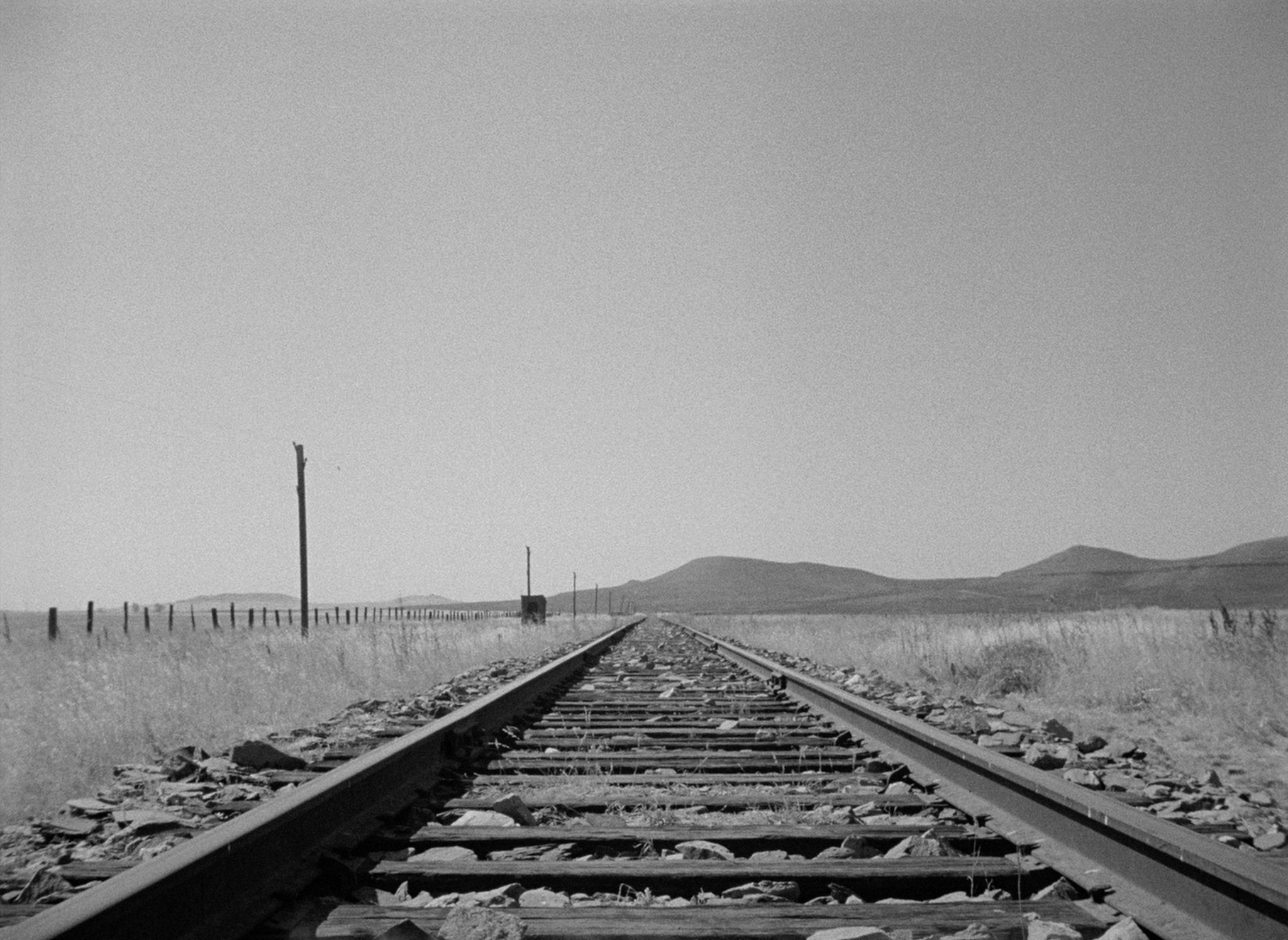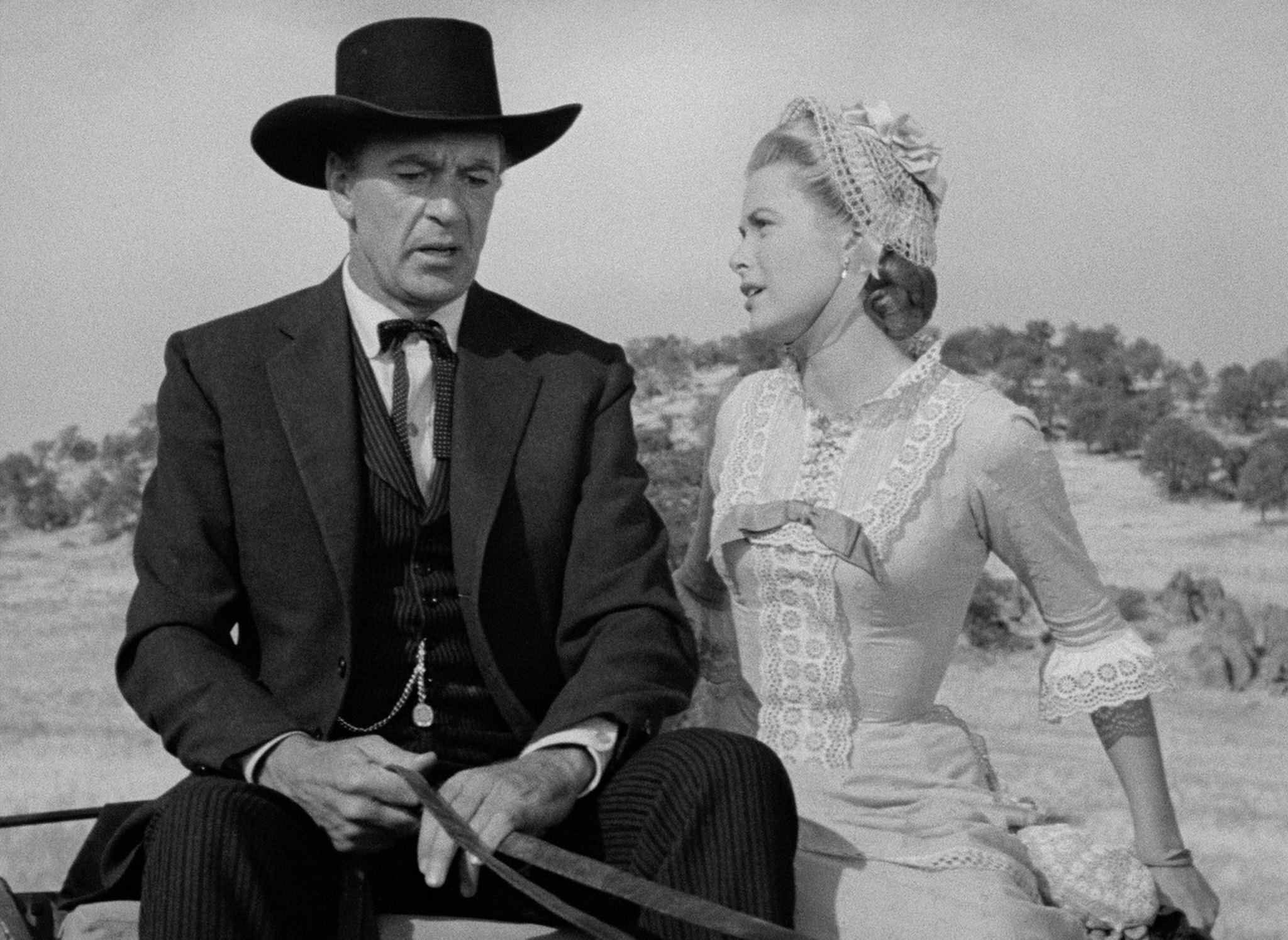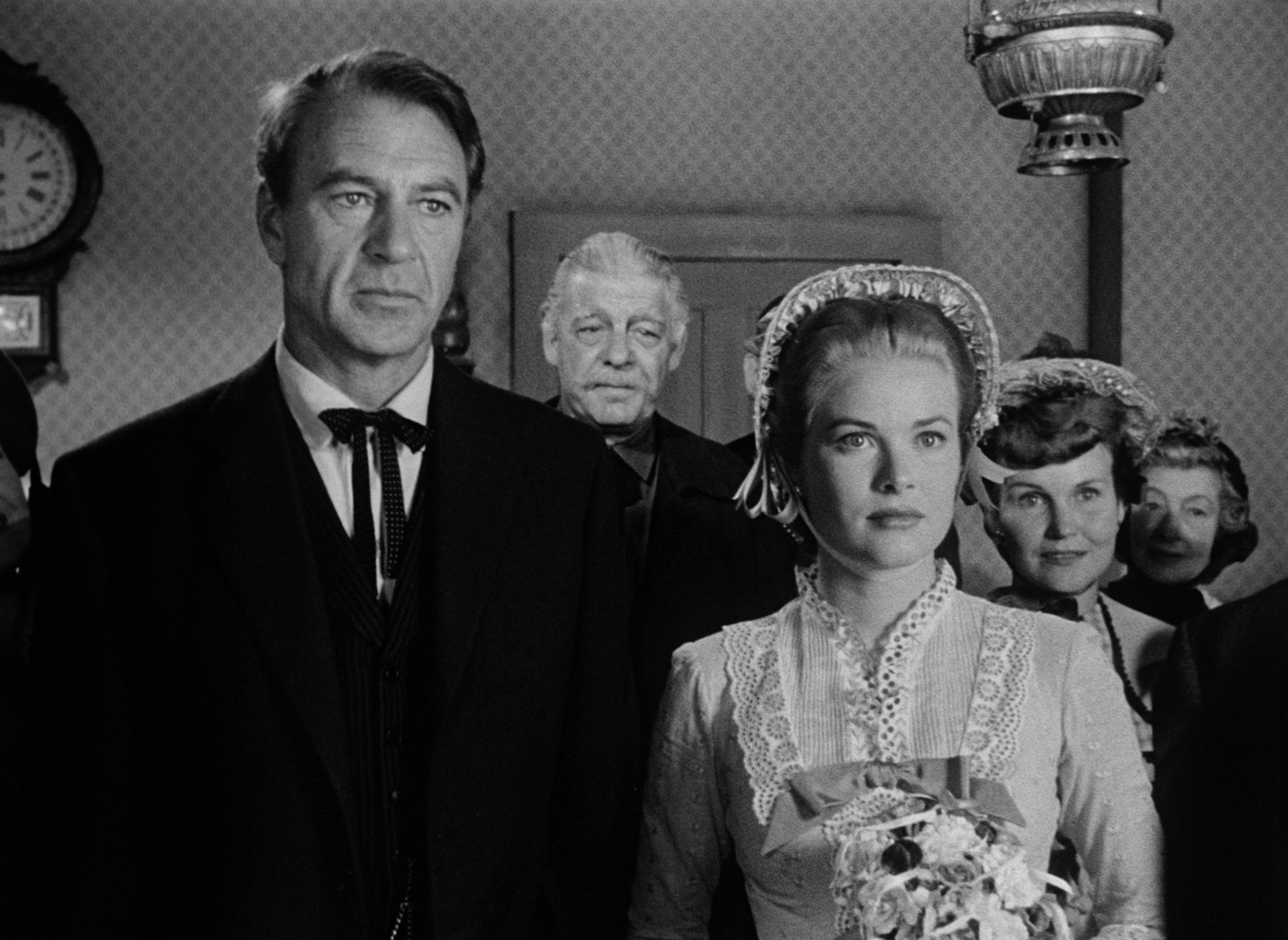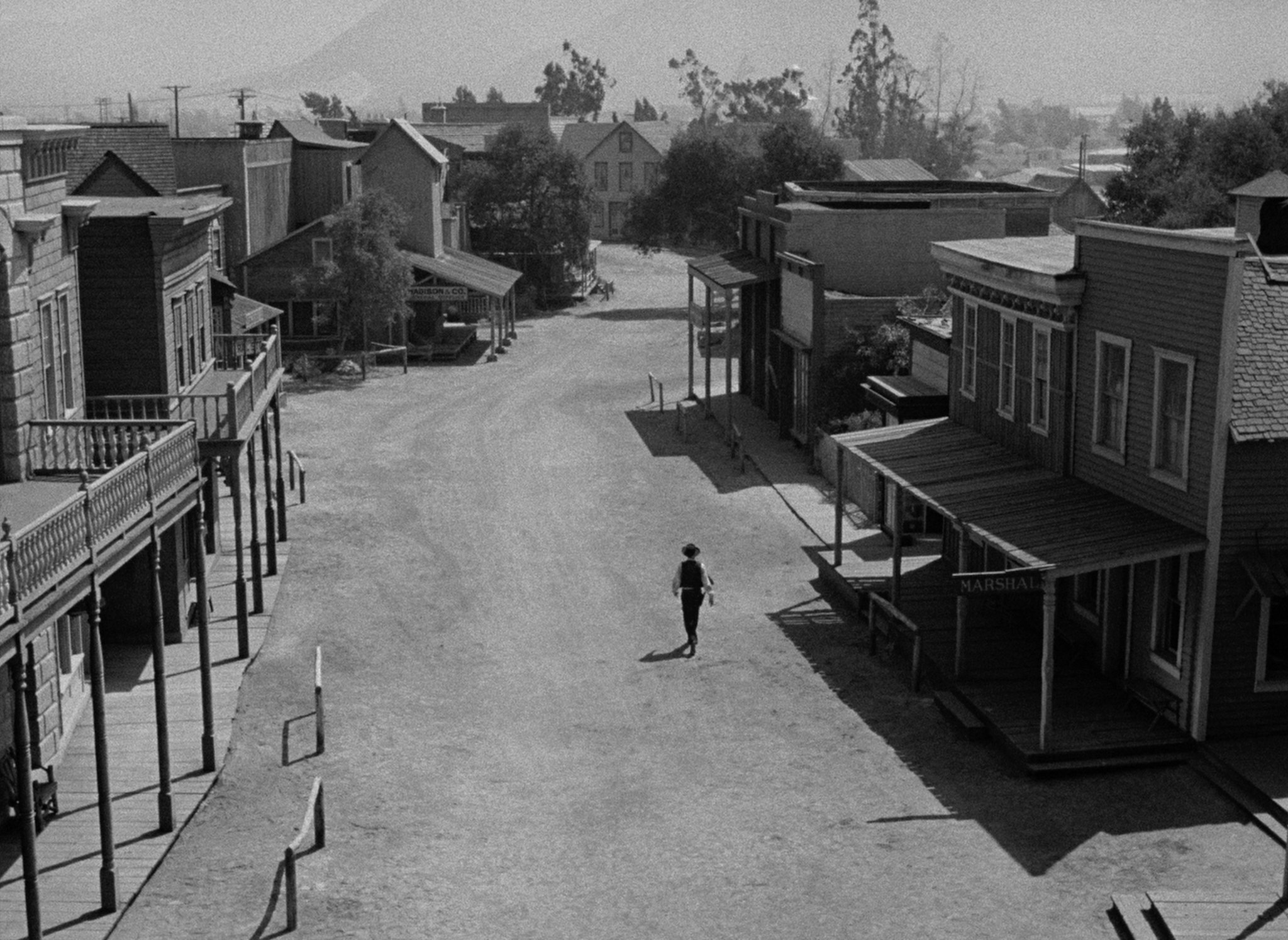Three menacing riders meet on horseback just on the outskirts of a small western town, and make their way to the train station, where they wait for the noon train. Meanwhile the retiring Marshall celebrates his wedding, surrounded by his closest friends – that is until he hears the news of a notorious outlaw, who is returning to town on the noon train. So begins Fred Zinnemann’s High Noon, one of the most iconic westerns ever made.
What can I say about High Noon that hasn’t already been said? It’s one of the greatest westerns of all time, but it’s also an oddity of the genre. There’s a lot of dialogue, barely any action, and the only shootout of the film is entirely contained in the final 10 minutes. A film that is simultaneously timeless, but could only have been made in a very specific period of American history. The McCarthy witch-hunts were in full swing, and the idea of people not stepping up and abandoning their friend, really hit home. Written by Carl Foreman, who was blacklisted shortly after, the film was incredibly controversial at the time and packs a punch even today (John Wayne hated it, and made Rio Bravo with Howard Hawks as a response).
It’s still a great film in it’s own right, and the real-time framing device works incredibly well as a way of building tension. The constant ticking, the shots of various clocks in the town, and the use of Tex Ritter’s iconic theme tune all add to the claustrophobic feeling of suspense as the time slowly runs out for Will Kane (Gary Cooper). There is even a tense montage as the crucial hour arrives, as we see freeze frames of each of the main characters. It’s a really evocative sequence, and a striking stylistic choice for the time.
As there isn’t much in the way of action, more time is spent developing the characters, and the cast is pretty much perfect across the board. Gary Cooper is brilliant as the retiring Marshall. Though too old for the part, and in excruciating pain throughout due to a back injury, Cooper gives perhaps his best performance. His growing desperation and panic as he runs out of options is palpable, and the conflict he feels about his role as Marshall, and finally his resignation to his fate is written all over his lined face.
The film also features some really well rounded female characters for it’s time. Grace Kelly is great as Kane’s quaker wife; this was one of her first films and she makes what could be a wet blanket into a timid, yet strong-willed and determined character. Katy Jurado is just as impressive as the demure Mexican former madame, an independent, shrewd businesswoman who really sticks in the memory, and the two of them are probably the strongest, most well developed characters in the film.
The supporting cast includes Thomas Mitchell, all blustering pomp and spin as the town mayor, Lon Chaney Jr as the quiet, unassuming former Marshall, with Robert Wilke, Sheb Woolley and the unbelievably young Lee Van Cleef making for a suitably menacing trio of villains. Even the minor characters are given depth; the snide hotel clerk hints at years of resentment with only a handful of lines. The actor who played him, Howland Chamberlain, was one of the many actors blacklisted after the McCarthy witchhunts, and this was his last film for over 20 years, but he really sticks in the memory.
The only character who doesn’t really fit is Lloyd Bridges as the young, impulsive deputy. While Gary Cooper was also old for his role, he could just about sell it, Bridges looks way too old for his character, and though his performance is fine, the dialogue referring to him as a “boy” is laughable.
Even today, the absence of violence and the incredibly unheroic stance taken by the townspeople is striking. Similar to William A Wellman’s The Ox-bow Incident, Zinnemann wasn’t afraid of showing the hypocrisy of so-called ‘good people’. One by one, Kane’s friends and allies disappear; some make excuses, some get out of town, and some just hide. On this viewing the scene that stood out the most was the one where the church meeting descends into chaos, as the townspeople argue and prevaricate about the situation. As they each make excuses, you see Cooper visibly deflate as he realises he’s not going to get any help here, and Mitchell’s impassioned speech, which seems at first to be a rallying cry, ends with him essentially throwing Kane under the bus. It’s such a cynical view of politicians, and played perfectly.
What makes the film still impactful today isn’t the message itself, but how it’s presented. While old fashioned in places, it’s not overwrought or heavy handed, and remains quite understated in getting it’s message across. The story is timeless, the performances are pitch perfect, and the film making is old Hollywood at it’s best. A slow burn to be sure, but a classic western, and one of the very best.
Special Features
Eureka’s Blu Ray releases, especially their Masters Of Cinema series are often even better than the Criterion Collection. High Noon is no exception; it looks beautiful, with crisp, stark black and white cinematography – the famous crane shot looks incredible. It’s also packed with special features. These include two new audio commentaries from historians Glenn Frankel and Stephen Prince, a new interview with film historian Neil Sinyard that’s both informative and entertaining, and a 1969 interview with screenwriter Carl Foreman. There is also the usual Making Of documentaries and a theatrical trailer.










